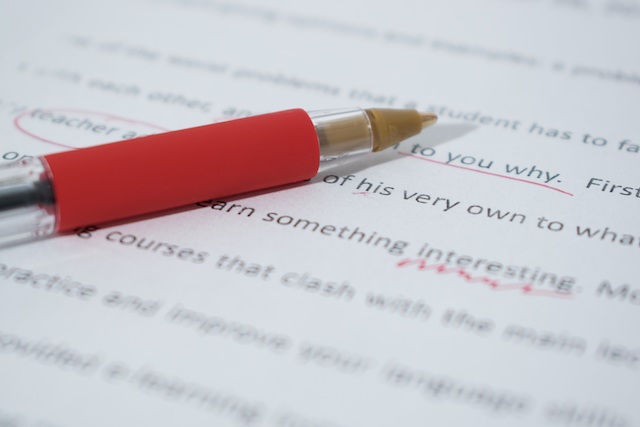
Photo by Suzy Hazelwood from Pexels
When Your Manuscript Is Done
Once you’ve finished writing your book, you’re probably anxious to get it out in the world. But, for your book to be a success, you’ll want it to be the best it can be. Readers like a story the reads well, keeps them emotionally engaged, and drives them on to discover what happens next.
Sending your book to a professional editor will get you an objective and professional review with the tailored changes your book needs to meet genre expectations and reader success. But before you rush your finished book off to an editor, take some time to make it the best it can be.
Many new authors believe an editor’s job is to fix everything in the book. They rush the manuscript off for editing, hoping to get their book out in the world as soon as possible. But finishing the manuscript is still the writer’s job.
Preparing your manuscript for an editor takes more work than writing The End. Ultimately, you are responsible for the final version of your book. You’ll save yourself time and money by preparing for an editor.
Here are seven recommended stages to prepare your manuscript. Look out for links to our other in-depth articles for more information on each stage.
1. Know What Type of Editing You Need
You'll need a different type of editing depending on what stage your book is at.
If you have trouble making your story come together, you can work with a developmental editor to help with story structure. They focus on the big story picture, looking for story gaps, plot holes, and story logic.
A line editor helps improve readability by smoothing syntax and paragraph structure. They’re not looking for mistakes but focus on improving the language you use to tell your story, to make it fluid, clear, and pleasurable for your reader.
The final polish is done by a copy editor. Not only do they check spelling, grammar, and sentence construction, they make sure your usage is consistent for hyphenation, numbers, and capitalization. Many editors ask for a style sheet where you delineate your preference for spelling like character names, hyphenation preference, and facts.
These three editing phases are sequential. If you trust your story and your language use, then you may look for a copy editor. And, a number of editors combine line and copy editing for a reduced fee.
This article addresses the steps you take to submit your manuscript to a copy editor. It’s the final step before publication.
2. Pay Attention to Book Length
There’s no point sending off an overwritten work to an editor. You’ll pay twice: once to be told your manuscript is too long, and again after you’ve made revisions.
Check that your word count fits your genre. Most novels fall between 80,000–100,000 words. Some genres accept shorter or longer word count. Let your genre be your guide.
If your manuscript is too long, look for places to cut, scenes to combine, and unnecessary descriptions. If the manuscript is over 200,000 words, consider breaking it into two books.
If your manuscript is too long, it’s not ready for editing. Plus, bloated manuscripts don’t sell.

3. Go Beyond the First Draft
No first draft is ready for editing. Your responsibility as a writer is to make the manuscript the best it can be. Go back and look for plot holes, scenes that don’t move the story forward, multiple characters that serve the same story role you can condense into one character.
Here are some questions to ask yourself:
- Do your subplots integrate with the overall story?
- Are they spaced throughout the storyline?
- Is the voice consistent throughout the story?
- Is one passage in a different tone?
- Do you need to research a location or an object to give it more punch?
- Would your reader know who is speaking by the way the character speaks?
- Does the dialogue reflect subtext rather than always being on point?
- Is the point of view consistent throughout? Is each scene told from only one point of view?
- If your story is told from multiple points of view, is it clear who is “speaking” in each scene?
- Are your words precise rather than general?
- Have you avoided clichés?
- Do you repeatedly use the same words or sentences?
- Are there run-on sentences? Sentence fragments?
- Is the same information repeated more than once?
- Does the tone shift?
- Is the phrasing natural?
- Is the language bland, causing readers to skip a passage?
- Do you use strong verbs rather than describing an action with adverbs?
Work through the entire manuscript to tighten your story and improve the language.
4. Take Time Away
Once you’ve gone through your revisions, put away your manuscript for some breathing time. Wait two weeks or longer, so when you return you’ll read it with fresh eyes.
The purpose of taking the break is to get closer to the reader experience. You want to experience the story as a reader rather than the writer who knows everything about the characters.
5. Use the Read-Aloud Test
When you are ready to return to your manuscript, read your story aloud. You’ll be amazed how much you’ll discover about your writing.
You can record your reading or use a text-to-speech application. Text to Speech Reader has a Chrome extension that will read your text. Natural Reader provides several voices so you can hear your text read by male and female voices with different tones and inflections. Listening to a voice that is not your own helps you hear the words in a new way.
When you hear an error, stop the recording and make corrections in your manuscript. What may not be obvious when you read becomes clear when you listen.

6. Listen to Peer Review and Beta Reader Feedback
While you are writing, your emotional attachment to your story is strong. That attachment makes it hard to get an objective view of your story. Other writers don’t have that emotional attachment. They can tell you when a sentence is clunky or why the logic of a scene doesn’t work. They’ll offer advice on how to better the flow.
Joining a writing group of peers helps you make adjustments as you write. You’ll avoid major rewrites later. And listening to the work of fellow writers in the group will heighten your sense of what works in storytelling. Just by joining in the group, you’ll become a better writer.
Once your manuscript is finished and you’ve performed your major edits, send it to a team of beta readers. Beta readers are people who love your genre and are willing to give you feedback on your story. They evaluate your story from a reader’s perspective. They’ll let you know when a passage is confusing, and will flag any unrealistic character behavior.
You’ll want a few beta readers, four or more, in your group. Each reader holds a unique perspective. It’s your call as the writer whether to rewrite from feedback, but when several of your readers comment on the same issue, it’s best to pay attention and rework the story.
Feedback from writers and readers will give you objective perspectives on your story. If you’re like most writers, one day you’ll feel your story is brilliant and the next you’ll feel like trashing the project. Outside eyes give you a more rational look at your overall manuscript.
7. Perform a Self-Edit
Taking the time to edit your novel before you send it out sets you apart as a writer who approaches the publishing process as a professional. Every step in the editing process refines your story to appeal to your target readers. They are the readers who love your story and become your fans.
Once you’ve listened to your story aloud to make changes and received and acted on recommendations from peers and readers, go through your manuscript one last time. Using a tool like ProWritingAid will help you spot small grammar and spelling errors. You can test for readability, bland words, and overused words to polish your language, making it fresh for your reader. Read our article on everything you should look for in a truly comprehensive self-edit.
There’s a point where you can stop, because no manuscript is every really finished. This is the point.
Ready to Send
When you go through these editing preparation steps, you’ll realize how your first draft was not ready for a final polish. The work you do will result in a better manuscript that’s ready for editorial attention.
If you’ve resolved the major plot holes and your editor charges by the hour, you’ll save money. If you’ve cut out lots of unnecessary words and your editor charges by the page or word count, you’ve saved money.
Best-selling authors take these self-editing steps. Some go through as many as 40 revisions. Then they work with a professional editor to find the spots they missed.
As excited as you are to get your story out there, taking the time to go through the editing process not only improves your story, it gives you a better understanding of what it takes to make yourself a professional.


